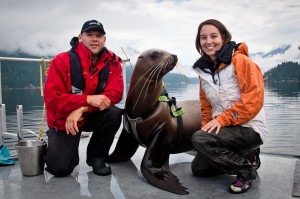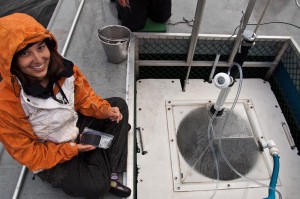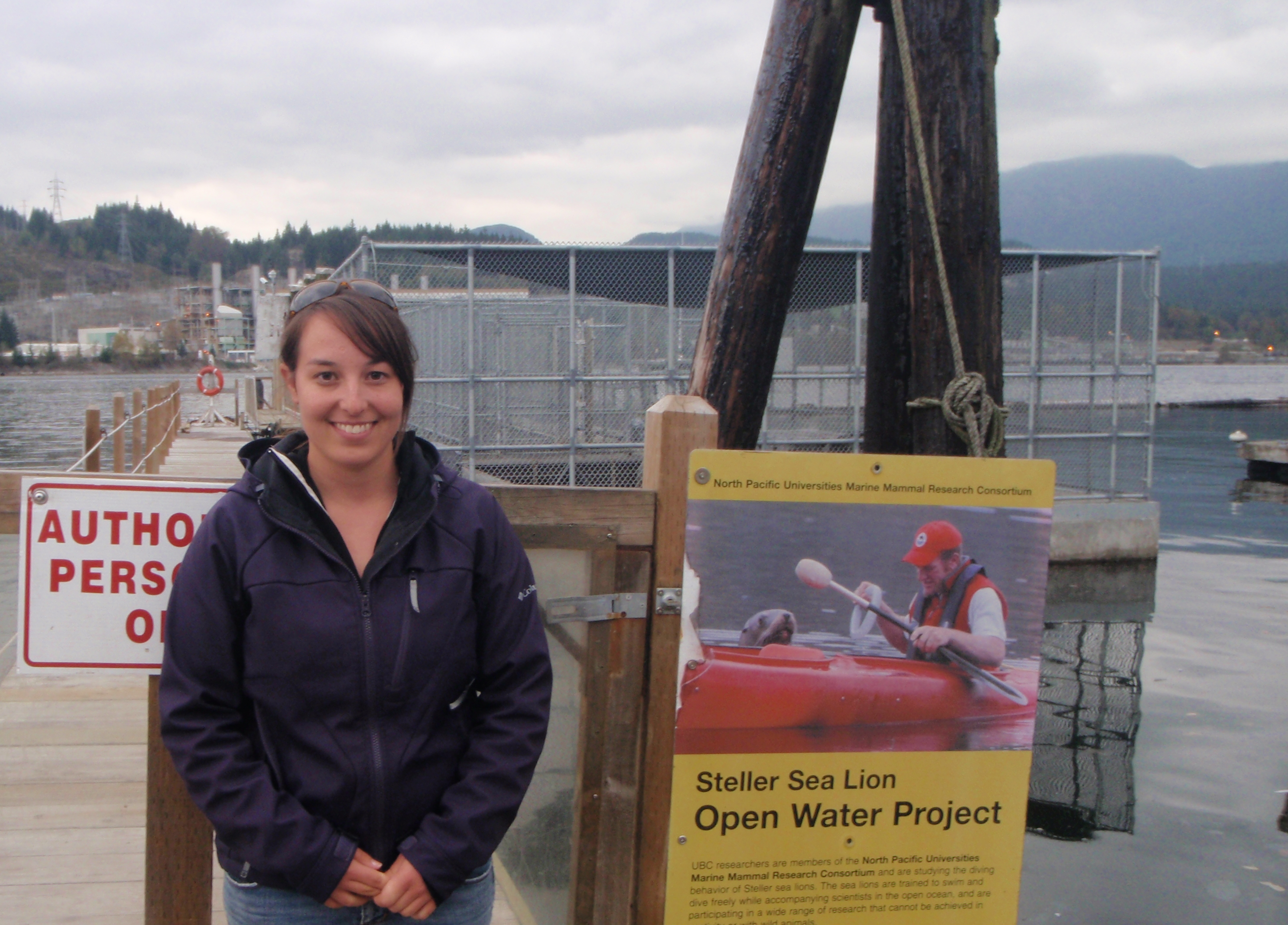Tel: 604.822.8181
Fax: 604.822.8180
E-mail: c.gerlinsky@oceans.ubc.ca
Supervisor: Dr. Andrew Trites and Dr. David Rosen
Education: BSc (Hons, Animal Biology): University of British Columbia (2009), MSc (Zoology): University of British Columbia (2013)
Research Interests: Marine mammal diving physiology, energetics and behaviour.
Research Area: North Pacific Ocean, Alaska and British Columbia
How do sea lions manage oxygen and carbon dioxide stores and how does nutritional stress affect their diving ability?
Problem
Steller sea lion populations in the Bering Sea and Alaska decreased more than 75% since 1980 and are classified as Endangered in the United States. Several hypotheses have been proposed to address the reasons behind this decline including nutritional stress, arising from either large scale oceanographic changes in the Bering Sea or competition with fisheries. The ability of sea lions to obtain adequate prey is partly constrained by their physiological capacity to maximize foraging time.
Steller sea lions face physiological challenges associated with breath-hold diving. The diving ability of marine mammals is typically defined by a limited amount of oxygen stores. Several studies have show marine mammals can tolerate low oxygen levels in their blood (compared to terrestrial mammals such as ourselves!). Foraging time however, must also be limited by carbon dioxide (CO2), which accumulates in the blood while diving.
 Research Questions
Research Questions
I addressed the following questions during my MSc:
1) How much oxygen do Steller sea lions have stored in their body and what are their diving (and foraging) limits?
2)How does nutritional stress affect their diving ability?
3) How do low inspired oxygen and high inspired carbon dioxide levels affect the diving ability and behaviour of Steller sea lions?
Approach
I carried out my research at the MMRU’s Open Water Research Laboratory and the Steller Sea Lion Lab at the Vancouver Aquarium. We work with captive animals that are trained to dive in the open ocean and surface inside a metabolic dome where we can measure their oxygen consumption and carbon dioxide production. This can be converted into metabolism and energy expenditure, which can be used to determine food requirements for these animals. We can record dive behaviour using video and time-depth recorders. We can also vary the amount, type and depth of fish to simulate different “prey patches” and record behavioural changes made by the sea lions. The concentration of oxygen and CO2 that the sea lions breathe inside the metabolic dome can also be altered to see whether it affects blood gases and dive behaviour.
Results
High inspired CO2 causes an increase in the animals breathing rate but does not seem to affect the length of their dive. However it does seem to take longer for them to recover from the dive (refill oxygen stores and eliminate CO2 from their bodies).
Animals dive for longer when nutritionally stressed, and pushed the limits of their diving ability. They also had greater body oxygen stores due primarily to higher blood volume. However, they also had higher metabolic rates while diving. This means that despite being able to dive longer, they had lower overall foraging efficiency.
Publications
Gerlinsky, C.D., A.W. Trites and D.A.S. Rosen. 2014. Steller sea lions (Eumetopias jubatus) have greater blood volumes, higher diving metabolic rates and a longer aerobic dive limit when nutritionally stressed. Journal of Experimental Biology 217: 769-778
Gerlinsky, C.D., D.A.S. Rosen and A.W. Trites. 2014. Sensitivity to hypercapnia and elimination of CO2 following diving in Steller sea lions (Eumetopias jubatus). Journal of Comparative Physiology B 184: 535-544
Gerlinsky, C. D., D. A. S. Rosen and A. W. Trites. 2013. High diving metabolism results in a short aerobic dive limit for Steller sea lions (Eumetopias jubatus). Journal of Comparative Physiology B 186: 699-708
LINK TO OW Movie
More on the Open Water Research Laboratory
Links
| I appreciate the help and support provided by: | |
 |
|
Photo credits: Andrew Trites

